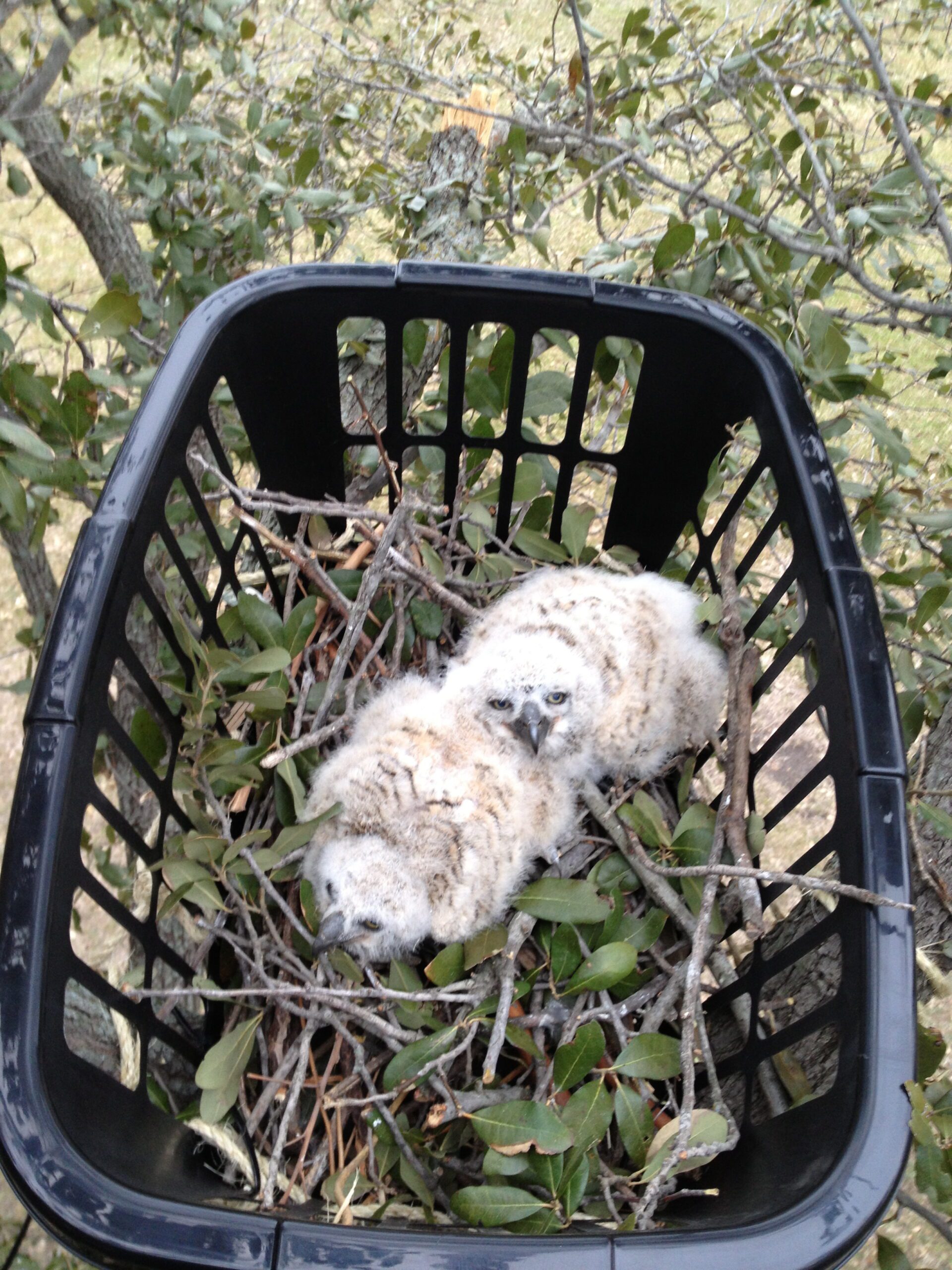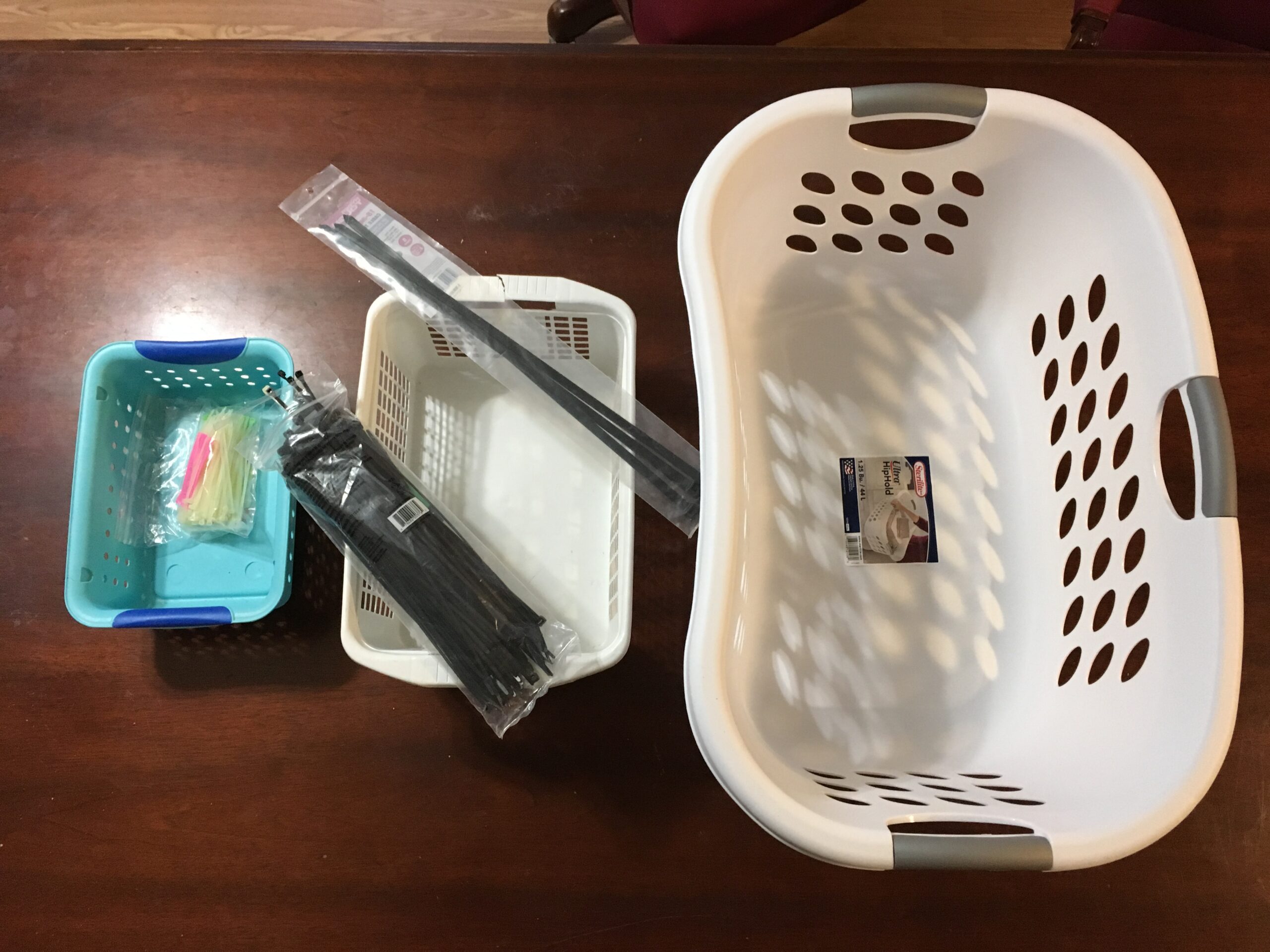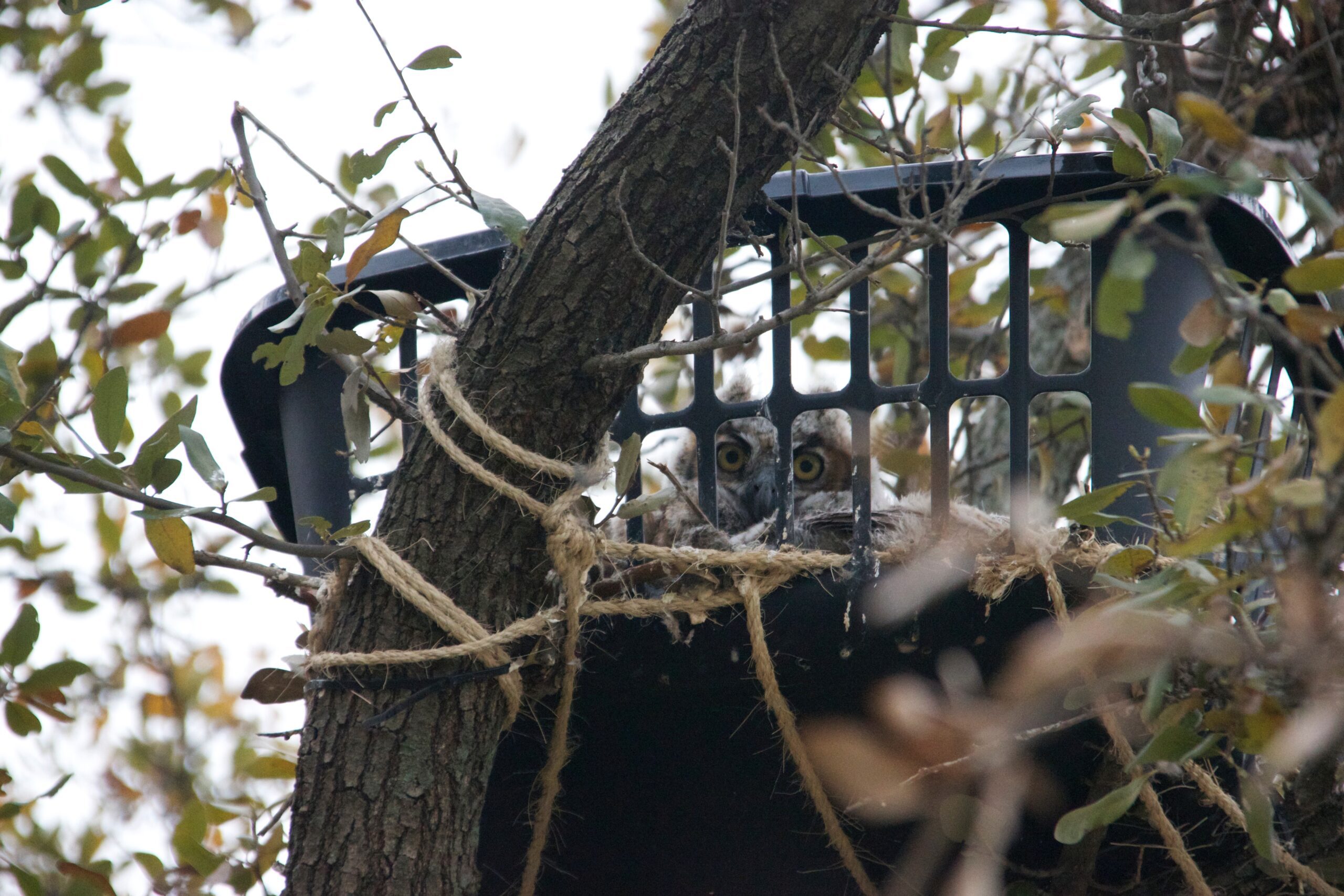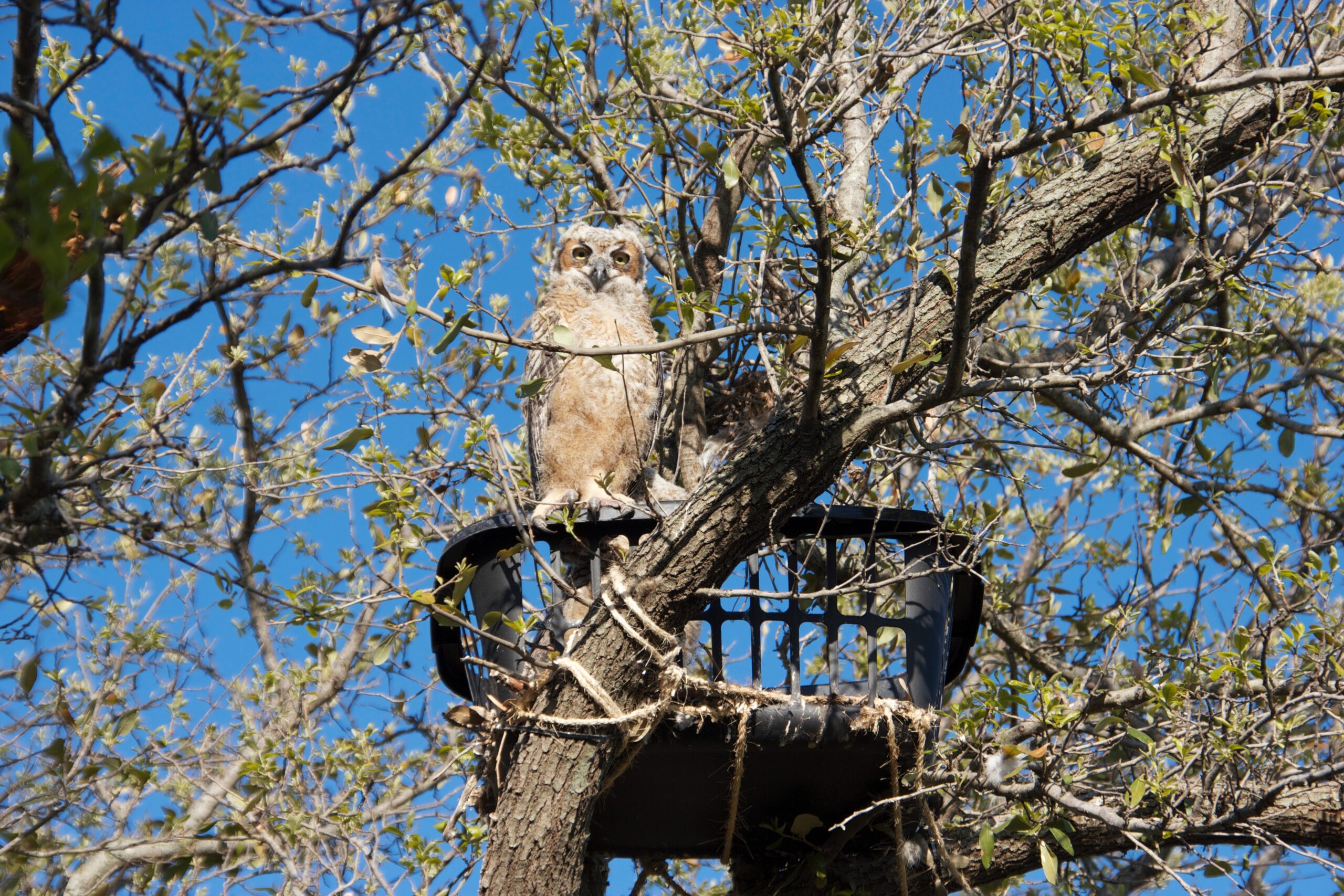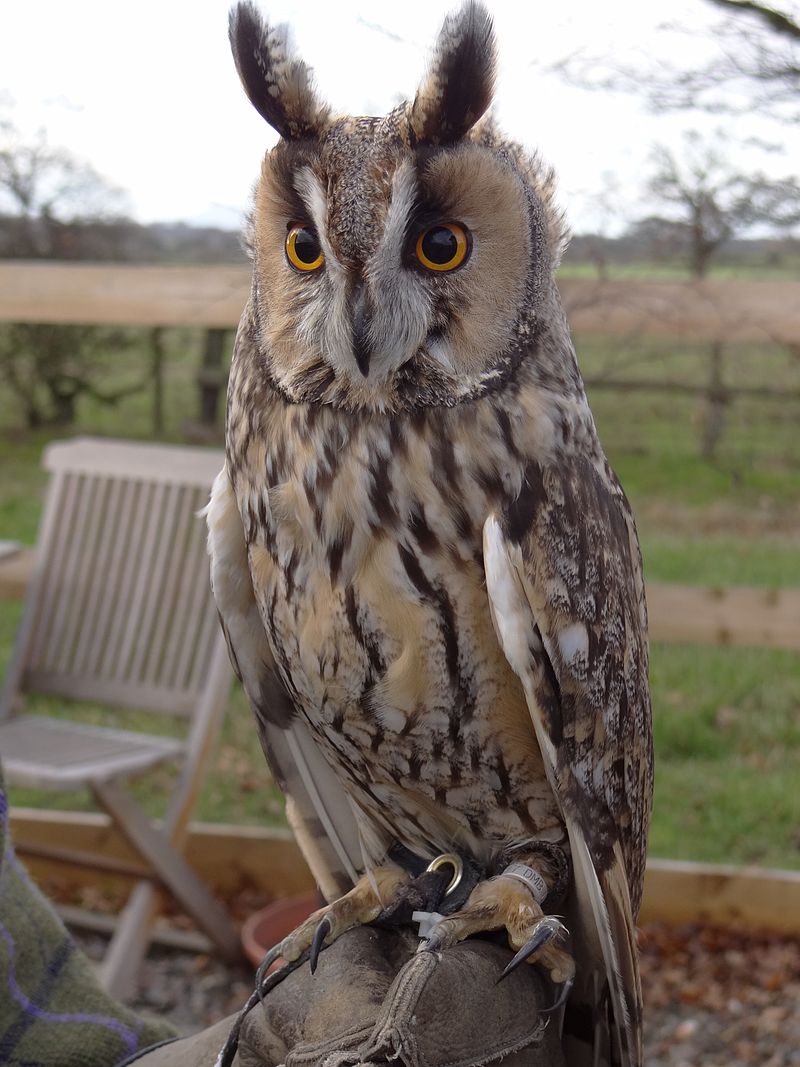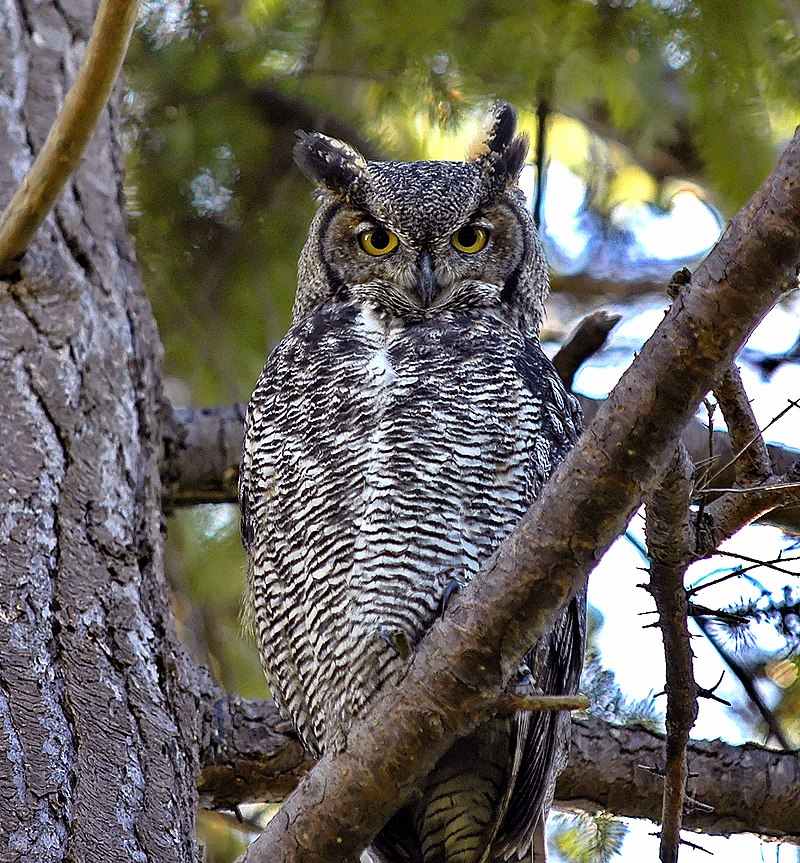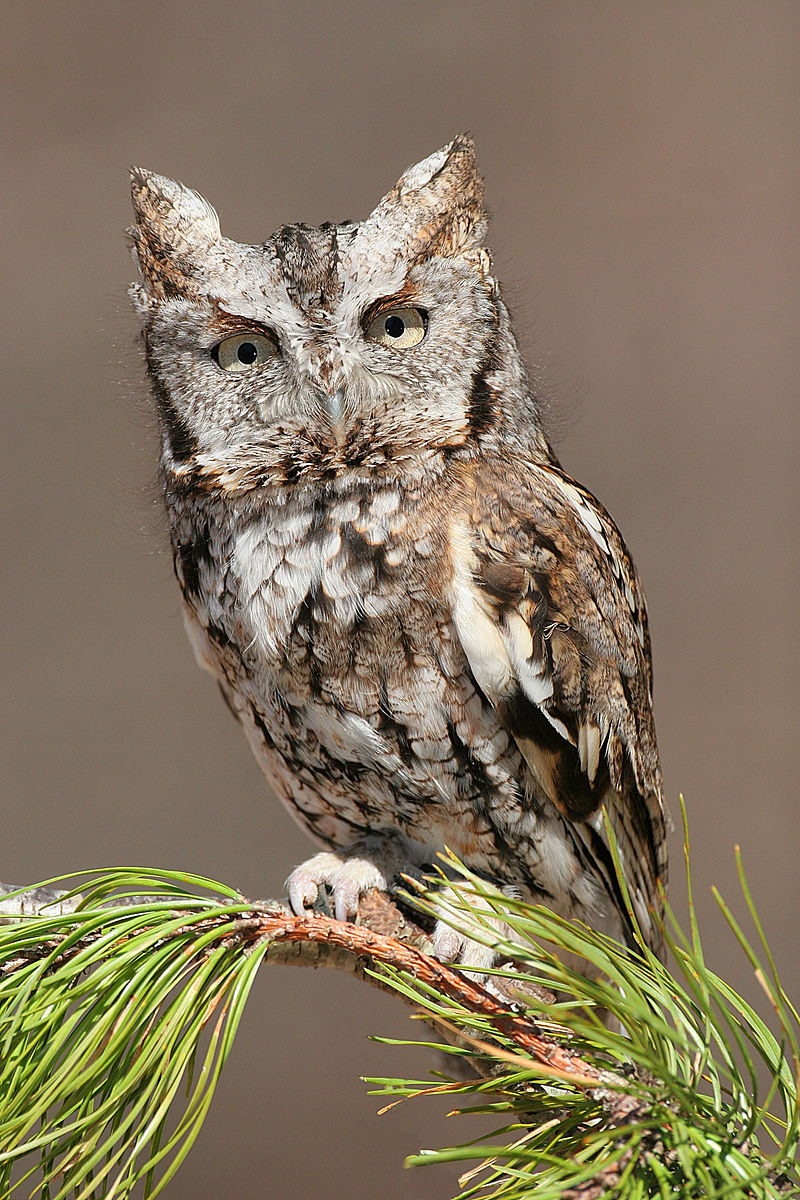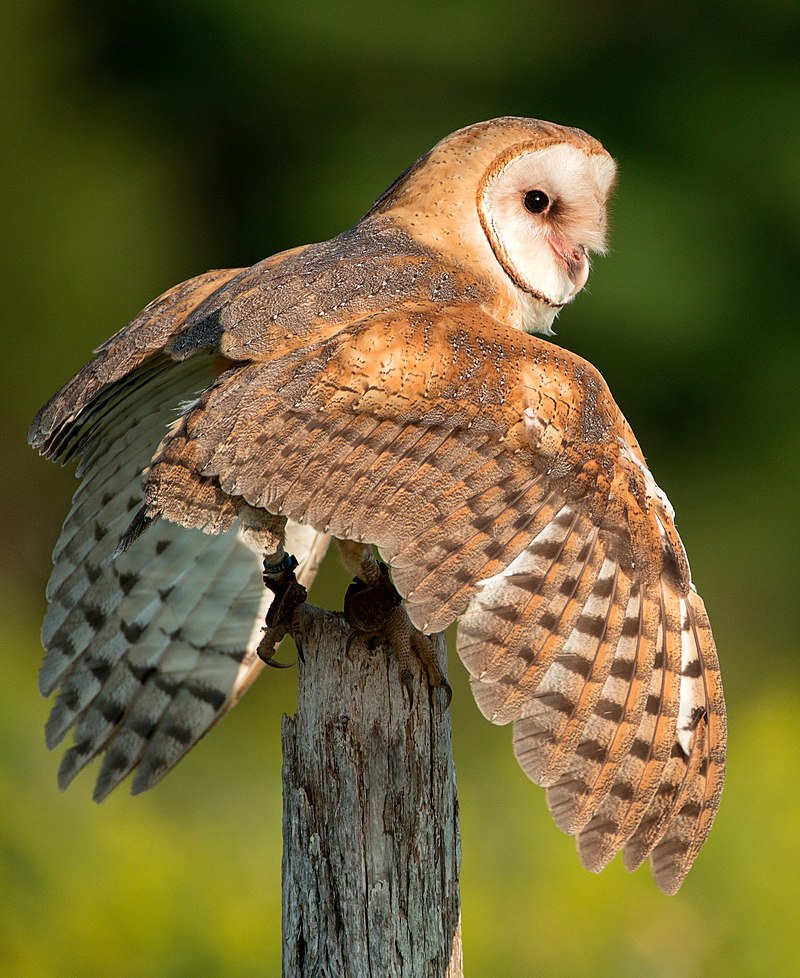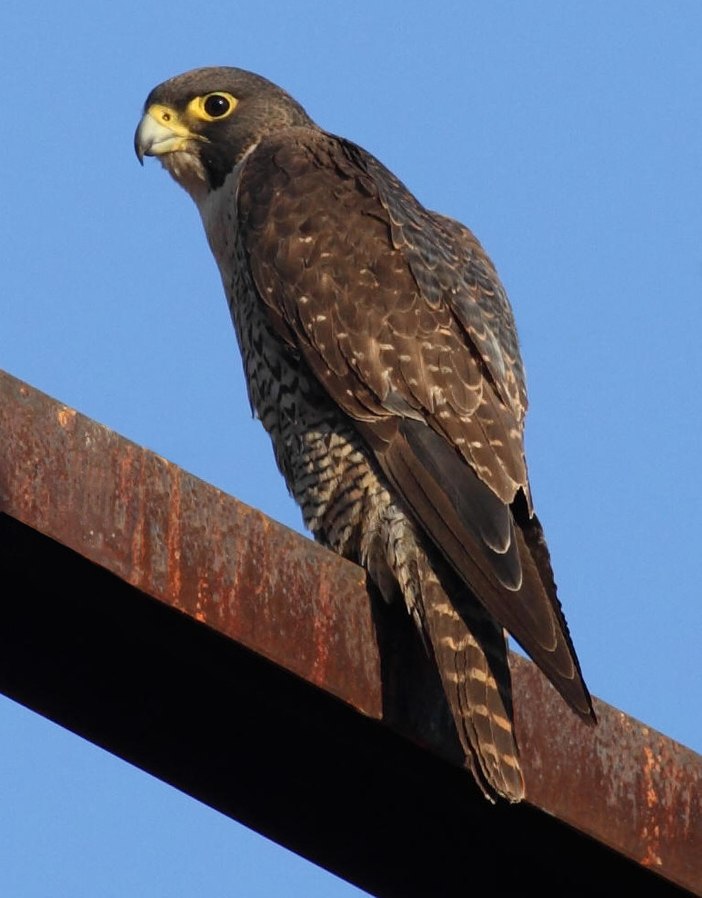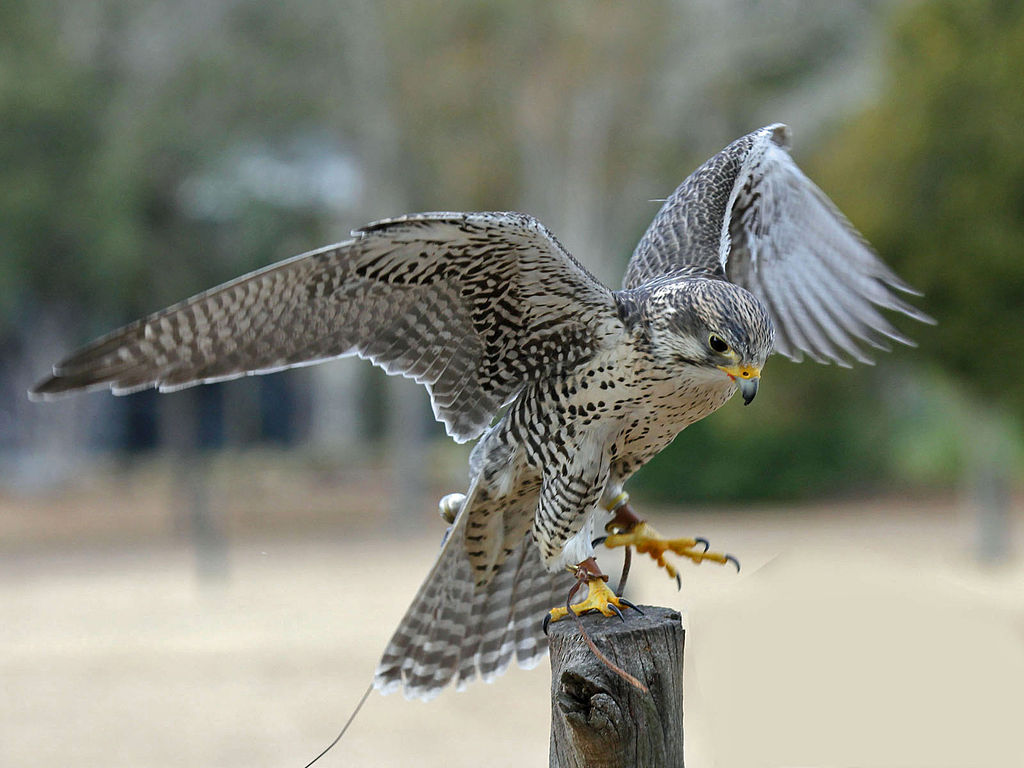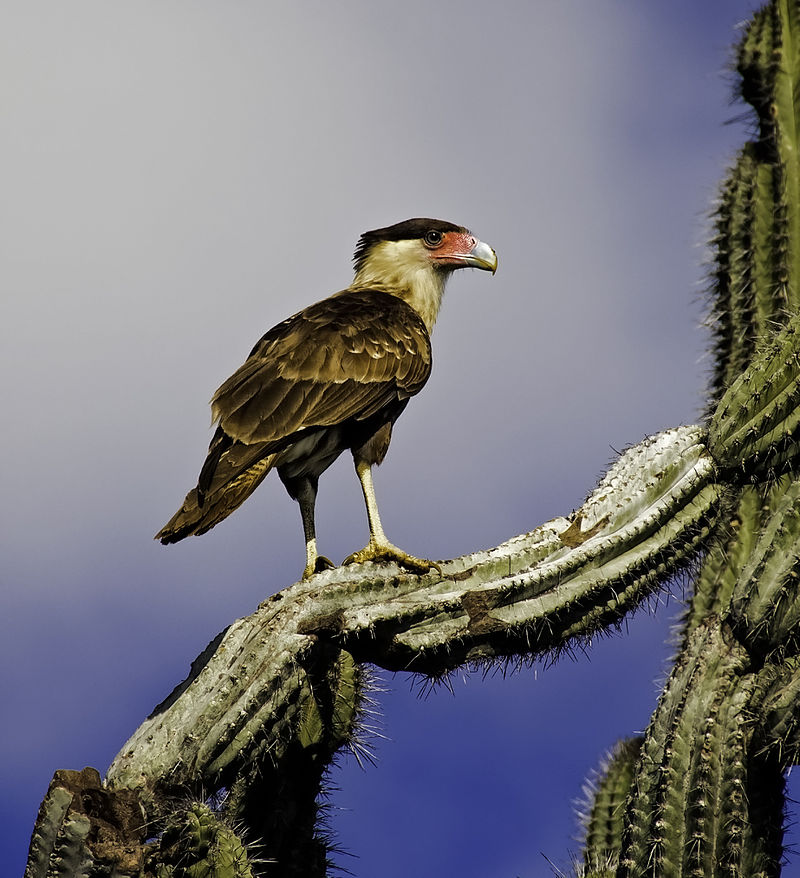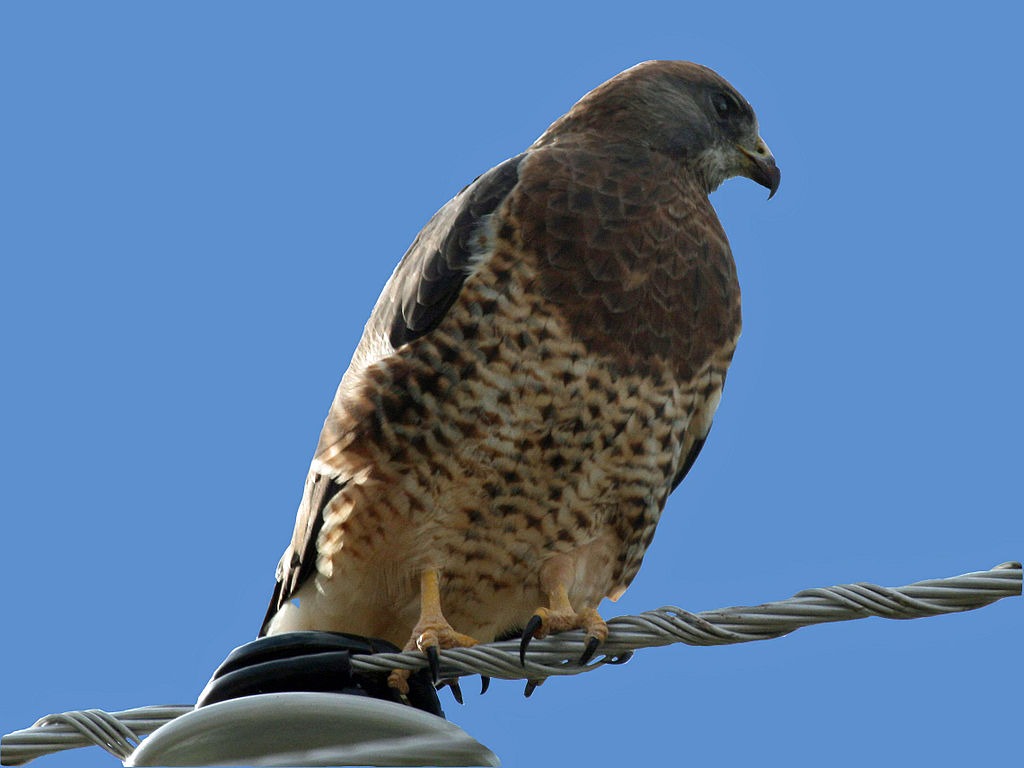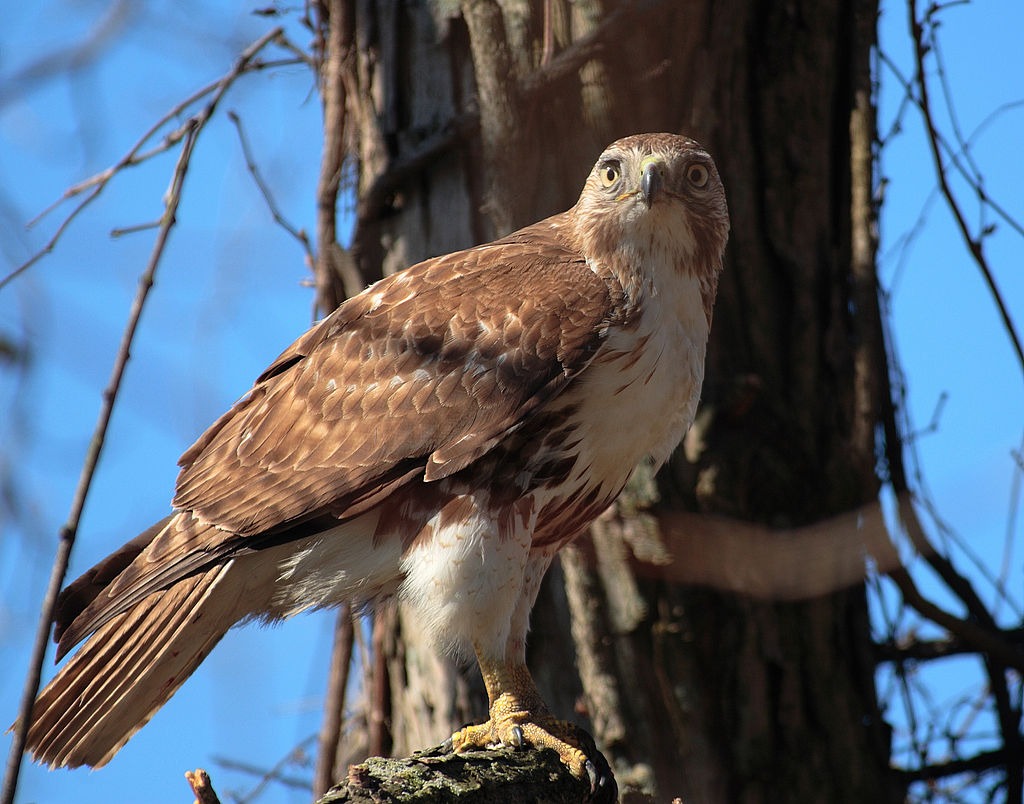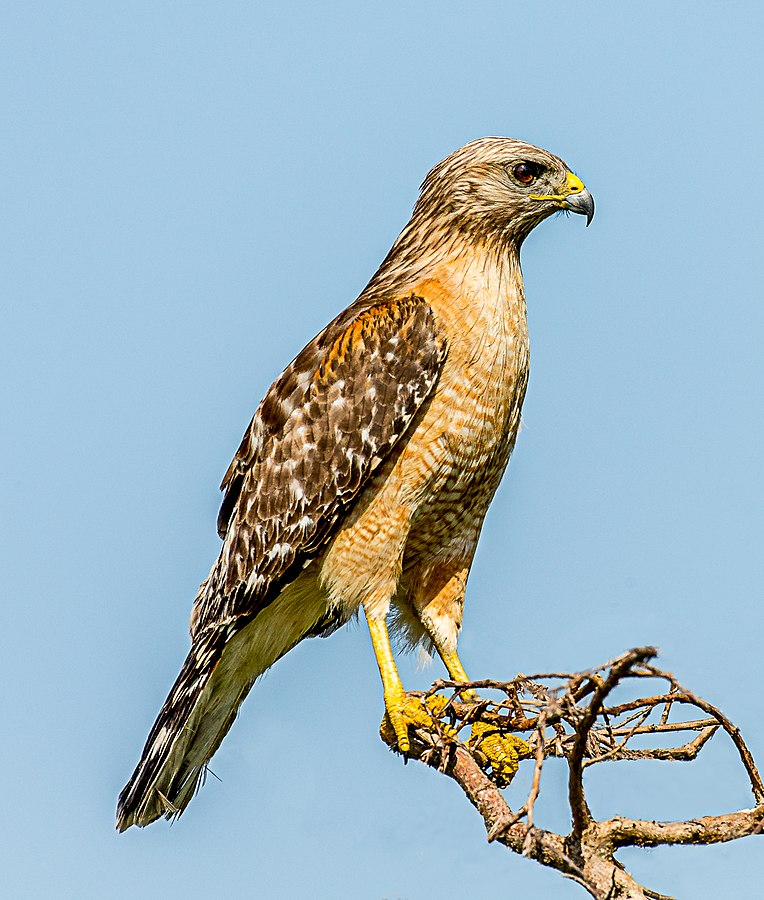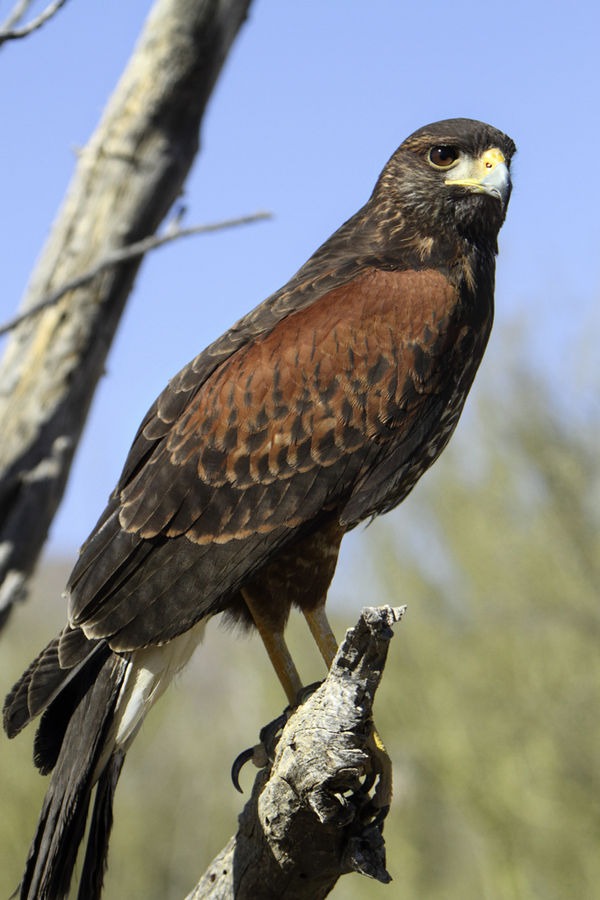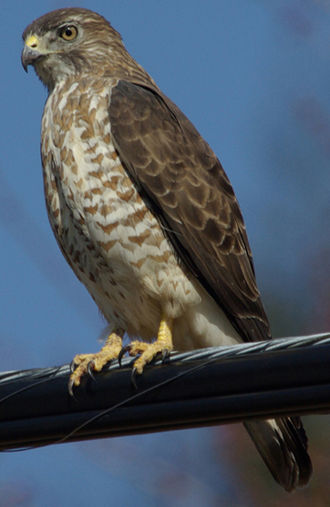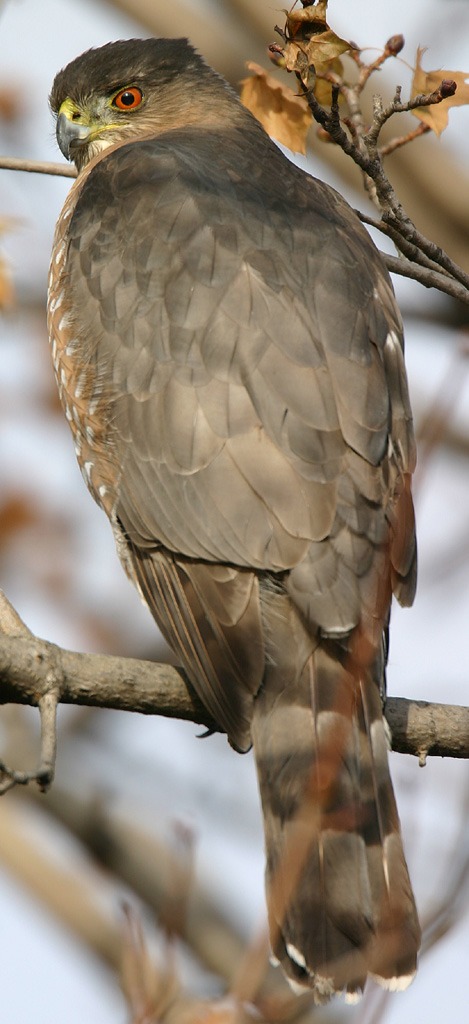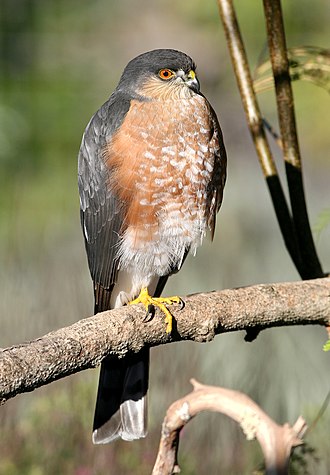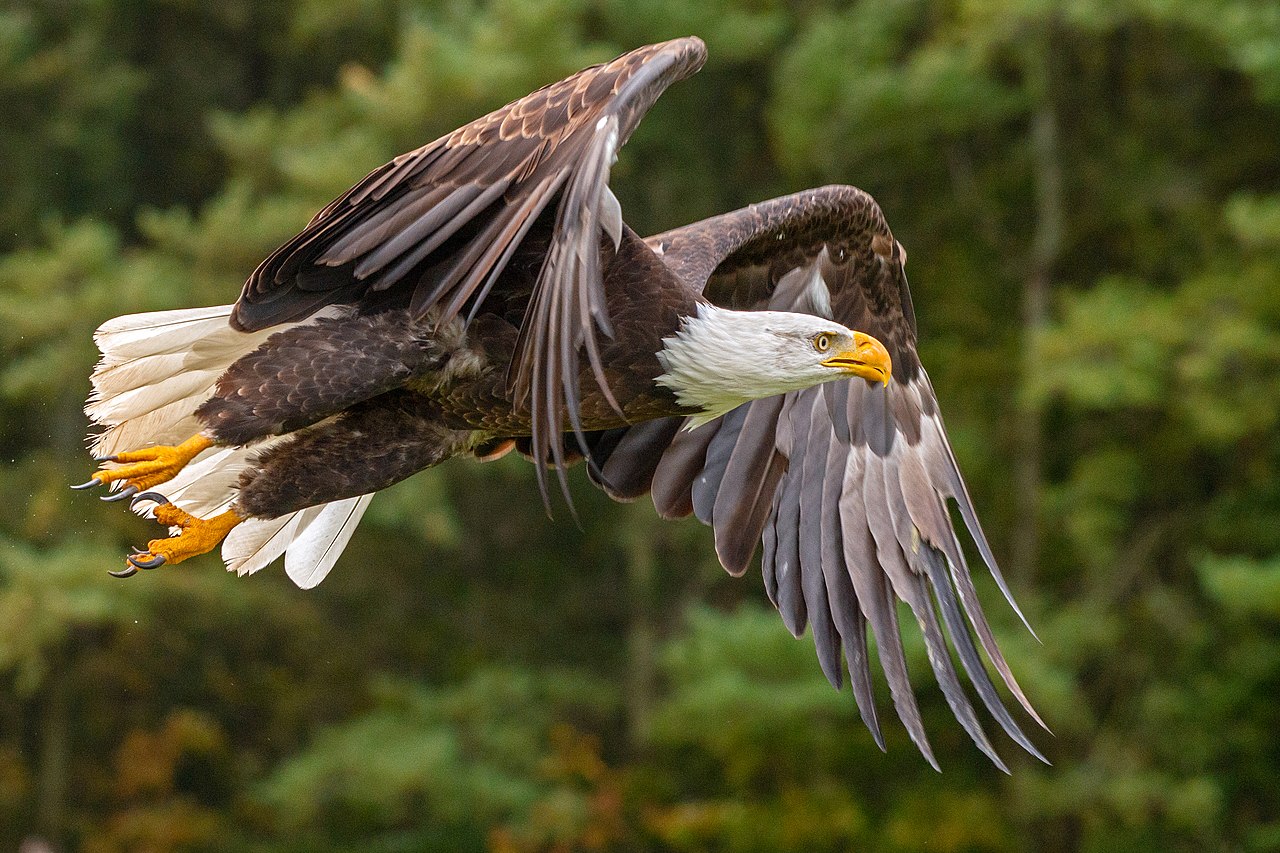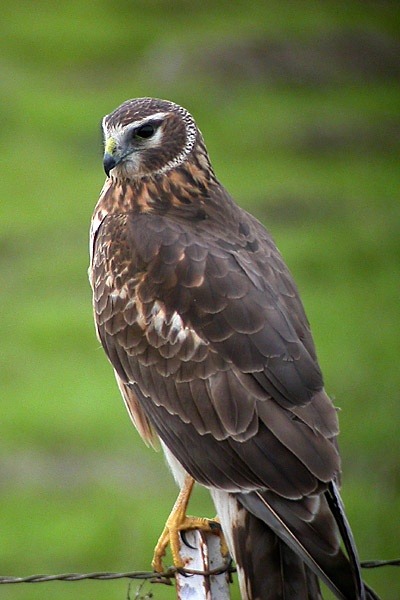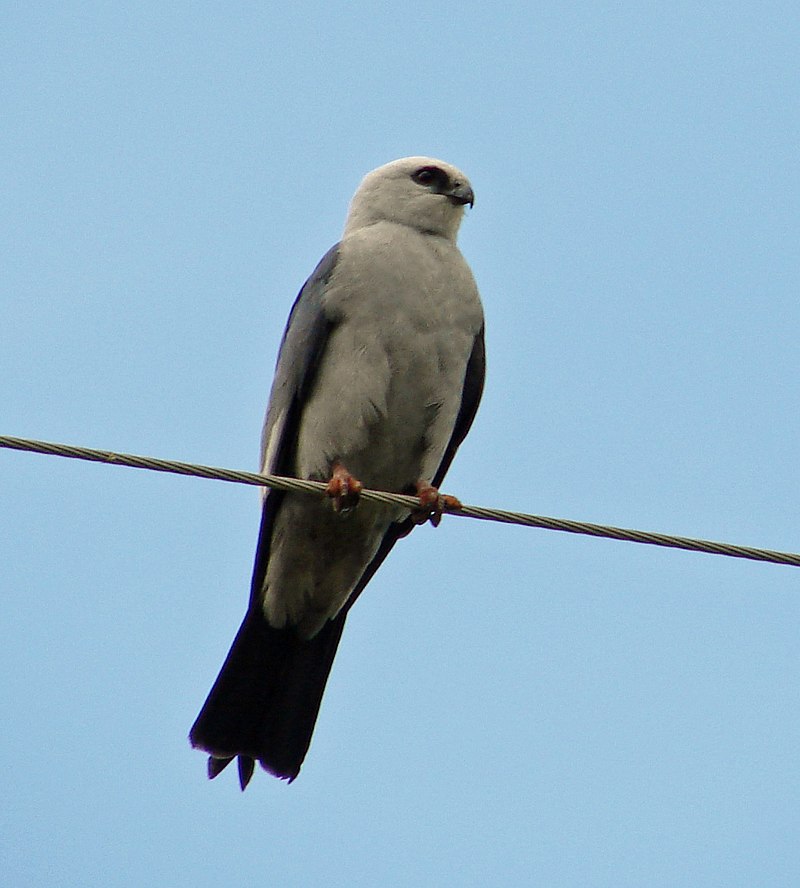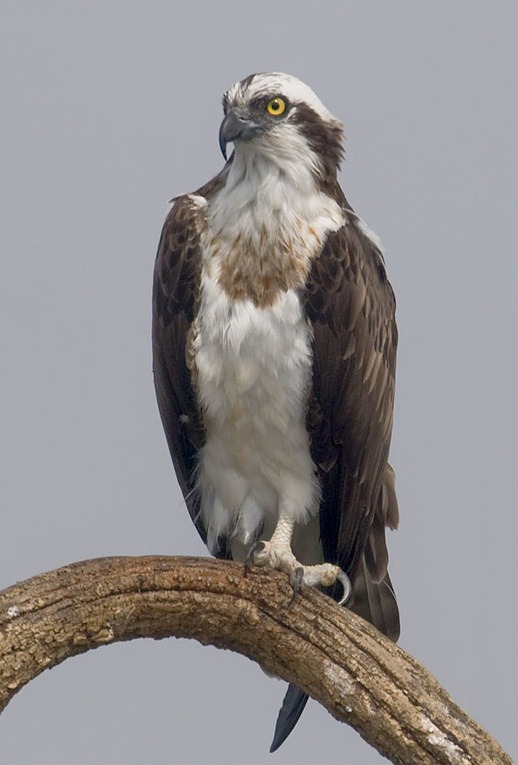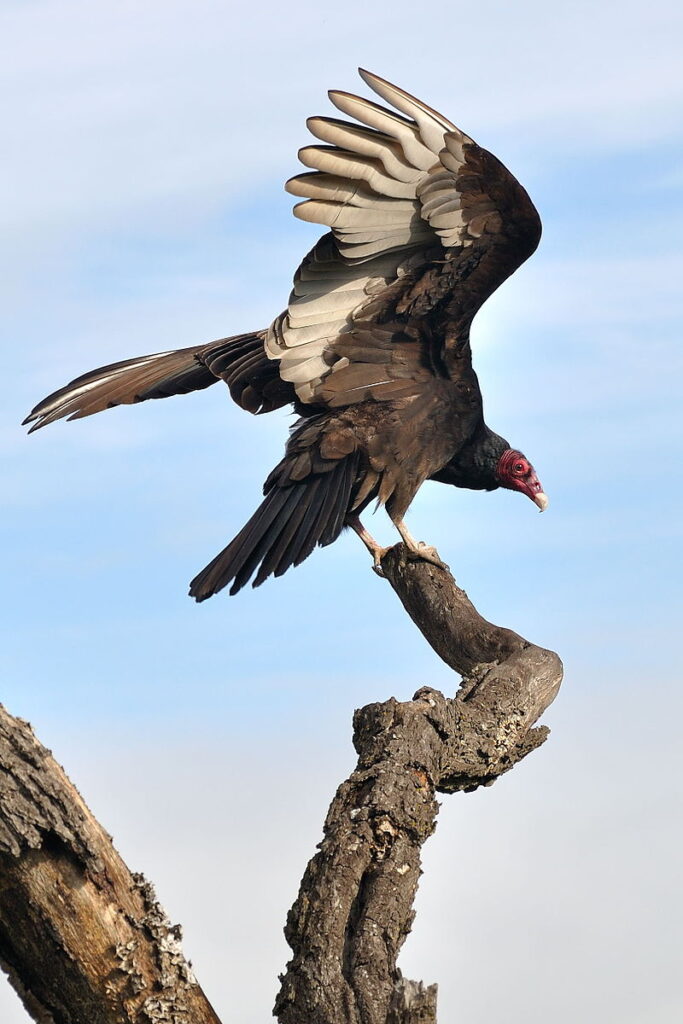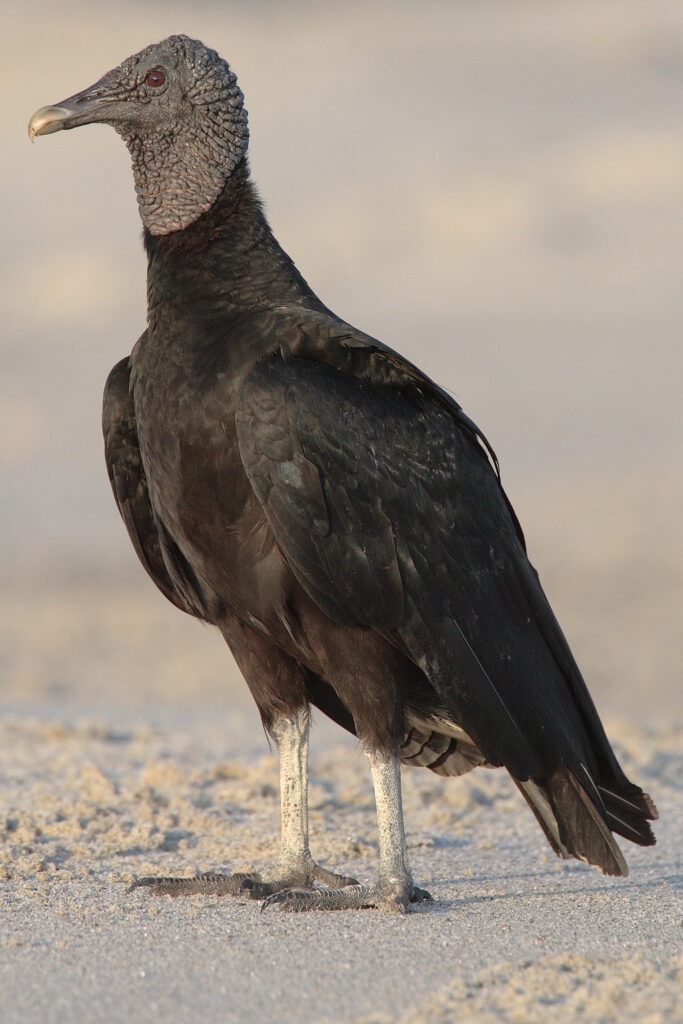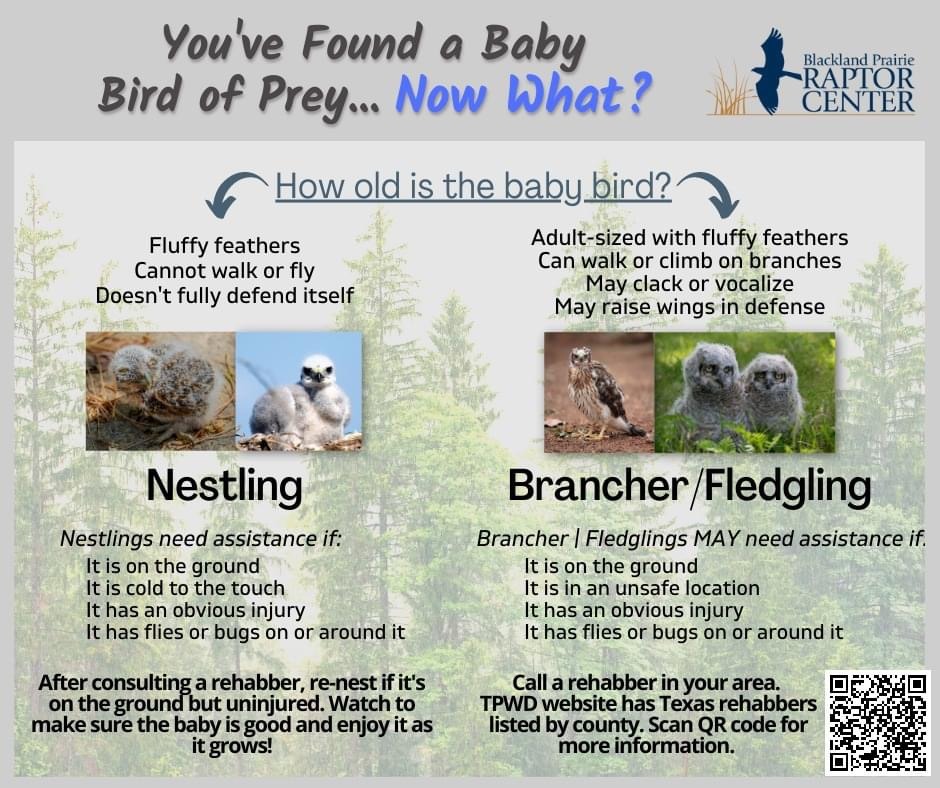
What To Do If You Find A Baby Raptor:
1. Look for any sign of injury…
If the bird is injured (bleeding, been attacked by another animal, or some other obvious injury), it needs to get to a raptor rahbilitor, like our Center or wildlife veterinarian. To contact Blackland Prairie Raptor Center, please call or text us at 469-964-9696 (Press Option 1).
Our normal business hours are 9am to 3pm. We check our voicemails often. Please leave us a message if you’re unable to reach us and we’ll return your call as soon as possible.
Our Center partners with many city animal control offices, veterinarians and other rehabilitators in the area to get injured raptors to us. Some of our local animal control partners include Plano, Richardson, Allen and Collin County. In Dallas, Eastlake Veterinary Hospital near White Rock Lake, and Summertree Bird Clinic at Inwood and the Tollway, will accept injured raptors – but they must be dropped off at their locations.
2. If you see no injury, then is the bird completely feathered?
If it is, it is probably fine. Baby birds that are learning to fly (known as a fledgling) often end up on the ground. It is a normal stage in learning for birds. It takes practice to fly (it’s just like human’s falling while learning to walk).
As long as it appears uninjured, leave it alone. Do your best to make sure other people or animals aren’t in the area that could harm it, and then leave the area. Parents won’t feed or approach a baby while humans are around.
3. If it has little or no feathering, then try to find the nest.
The best thing for a baby bird at this stage (known as a nestling) is being in its nest. Look up in the nearest trees or bushes.
4. If you find the nest, go ahead and put the baby back in the nest.
It is a myth that birds can smell human scent and won’t take care of it. Most birds have a terrible sense of smell. Wear heavy gloves to protect you from raptor talons, AND gently put it back.
5. Can I make a nest?
If you can’t find the nest, or it is unreachable, you can make a substitute nest.
SEE BELOW FOR INSTRUCTIONS ON BUILDING A NEST.
Nestling vs. Fledgling
How to help
How to Build a Raptor Nest
1. Use a small berry basket or plastic basket (put drain holes in the bottom)
2. Attach it to the tree as high as possible using zip ties and rope, and as close to the original nest or as close to where the nestling was found.
3. Fill it with small branches and leaves.
4. Gently put the nestling(s) into the nest.
Once the raptor is back in its nest, or in the nest you have created, leave it alone. Birds will not return if you are in the area. You can watch from an indoor location. Do not worry if the parents do not return right away; it can take quite some time for a parent to be comfortable approaching. The best chance for baby birds to survive is to leave them alone. In most cases, a baby bird raised by humans will not survive. And in many cases, if the bird survives being hand-raised, once released back into the wild it won’t have the proper skills to survive. Remember, the parents are the best teachers!
Support Blackland Prairie Raptor Center
Your support makes our rehabilitation, conservation, and education programs possible at BPRC!
Donate or volunteer your time with us below.



